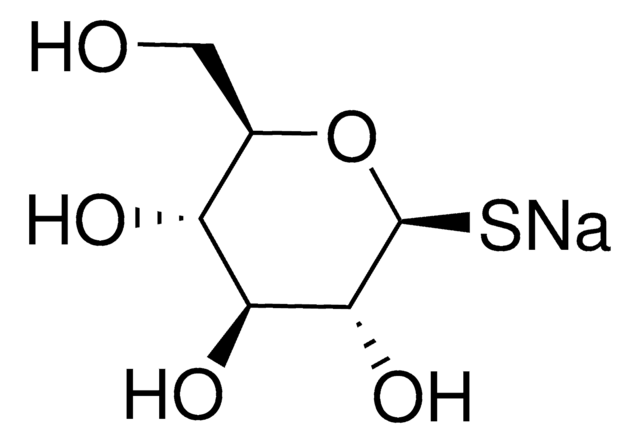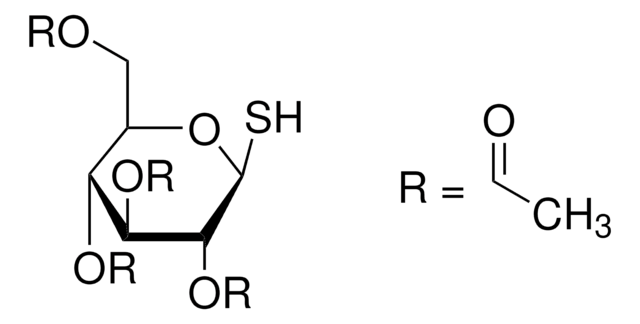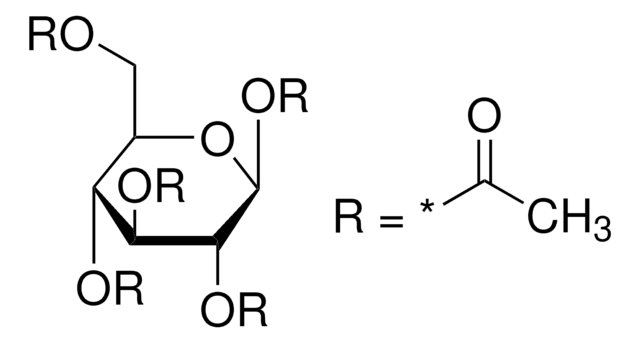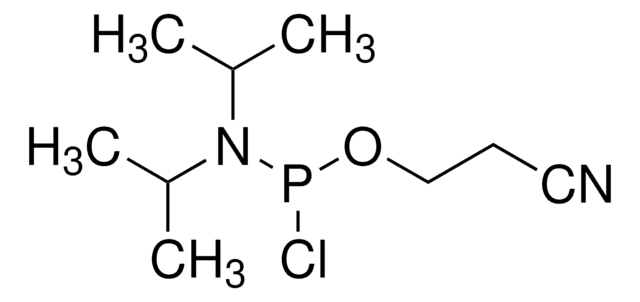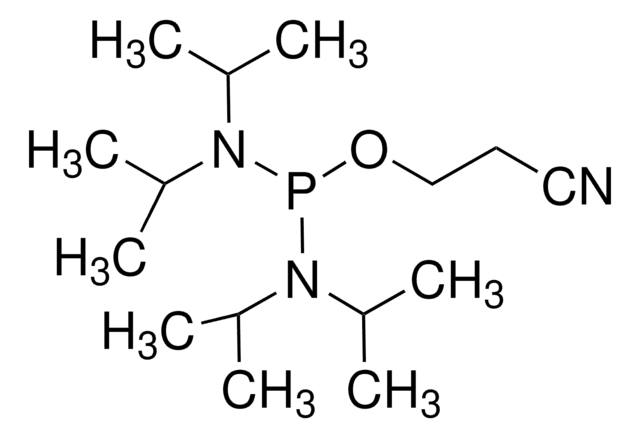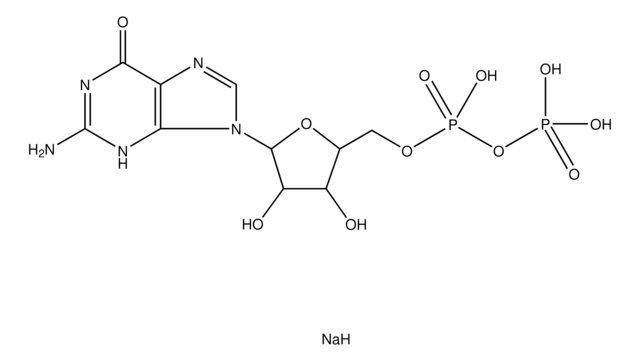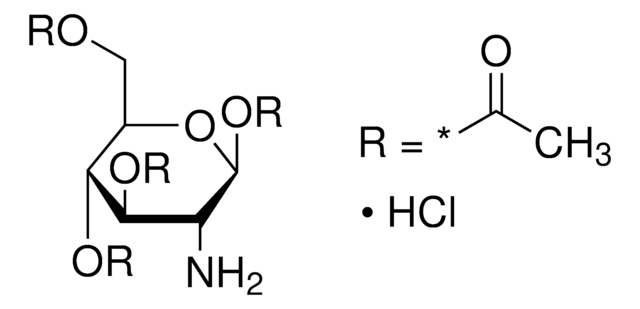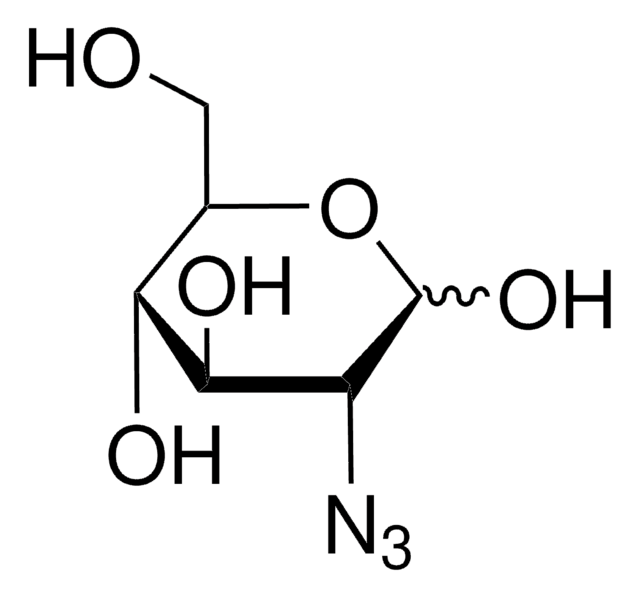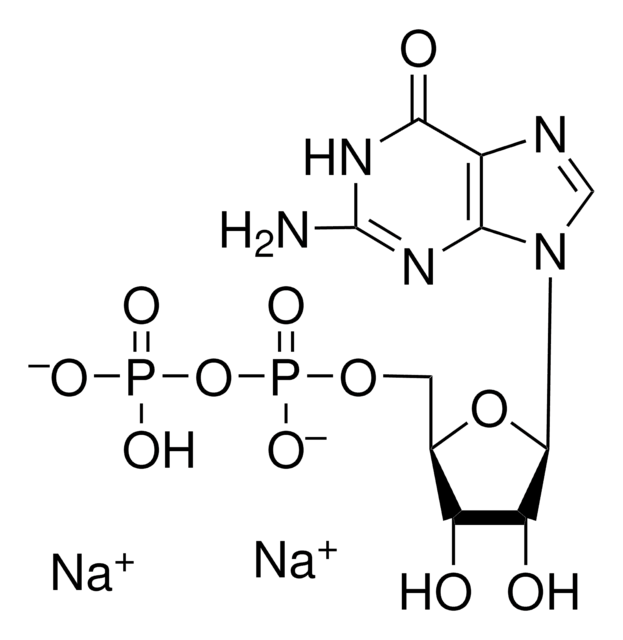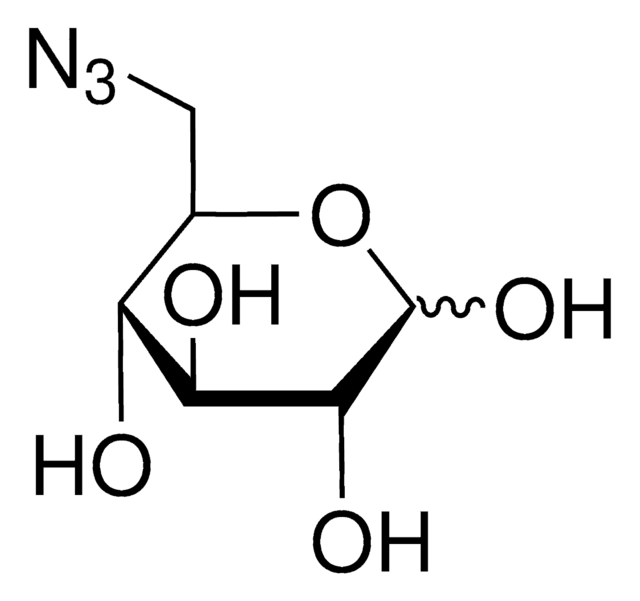All Photos(1)
About This Item
Empirical Formula (Hill Notation):
C6H12O5S
CAS Number:
Molecular Weight:
196.22
Beilstein:
1865193
EC Number:
MDL number:
UNSPSC Code:
12352201
PubChem Substance ID:
NACRES:
NA.25
Recommended Products
Quality Level
Assay
≥98.0% (HPLC)
form
powder
optical activity
[α]/D 220.0±5.0°, c = 1 in 0.1 M HCl
color
white to off-white
mp
135-138 °C (lit.)
SMILES string
OC[C@H]1S[C@H](O)[C@H](O)[C@@H](O)[C@@H]1O
InChI
1S/C6H12O5S/c7-1-2-3(8)4(9)5(10)6(11)12-2/h2-11H,1H2/t2-,3-,4+,5-,6+/m1/s1
InChI key
KNWYARBAEIMVMZ-DVKNGEFBSA-N
Looking for similar products? Visit Product Comparison Guide
Application
5-Thio-D-glucose (Glc-5S), a thiosugar hexokinase inhibitor, is used to control/reduce the rate of glycolysis in vivo.
Biochem/physiol Actions
Potent, competitive inhibitor of the cellular transport of D-glucose and of D-glucose mediated insulin release. Inhibitor of spermatogenesis.
Other Notes
To gain a comprehensive understanding of our extensive range of Monosaccharides for your research, we encourage you to visit our Carbohydrates Category page.
Storage Class Code
11 - Combustible Solids
WGK
WGK 3
Flash Point(F)
Not applicable
Flash Point(C)
Not applicable
Personal Protective Equipment
dust mask type N95 (US), Eyeshields, Gloves
Choose from one of the most recent versions:
Already Own This Product?
Find documentation for the products that you have recently purchased in the Document Library.
I Tahirovic et al.
Journal of neural transmission. Supplementum, (72)(72), 235-240 (2007-11-07)
It is believed that oxidative stress plays a central role in the pathogenesis of metabolic diseases like diabetes mellitus (DM) and its complications (like peripheral neuropathy) as well as in neurodegenerative disorders like sporadic Alzheimer's disease (sAD). Representative experimental models
Shayne F Andrew et al.
American journal of physiology. Regulatory, integrative and comparative physiology, 292(5), R1792-R1798 (2007-01-16)
Glucose is required for brain energy metabolism. Decerebration, aqueduct occlusion, and cannula mapping studies have established that glucose-sensing cells capable of eliciting feeding and adrenal medullary responses to glucoprivation are localized in the hindbrain. Glucoprivation also evokes corticosterone and glucagon
Xiaoyin Wu et al.
Journal of neurophysiology, 91(4), 1734-1747 (2003-12-03)
Circulating glucose levels significantly affect vagal neural activity, which is important in the regulation of pancreatic functions. Little is known about the mechanisms involved. This study investigates the neural pathways responsible for hypoglycemia-induced vagal efferent signaling to the pancreas and
The pancreatic beta-cell recognition of insulin secretagogues. 3. Effects of substituting sulphur for oxygen in the D-glucose molecule.
B Hellman et al.
Biochemical pharmacology, 22(1), 29-35 (1973-01-01)
B He et al.
Proceedings of the Society for Experimental Biology and Medicine. Society for Experimental Biology and Medicine (New York, N.Y.), 217(2), 168-172 (1998-02-06)
5-Thioglucose (5-TG) has been shown to increase food intake after acute administration. To determine the longer-term effects of 5-TG on feeding and body composition, thirty-four female Sprague-Dawley rats were cannulated into the fourth ventricle and infused with artificial CSF and
Our team of scientists has experience in all areas of research including Life Science, Material Science, Chemical Synthesis, Chromatography, Analytical and many others.
Contact Technical Service